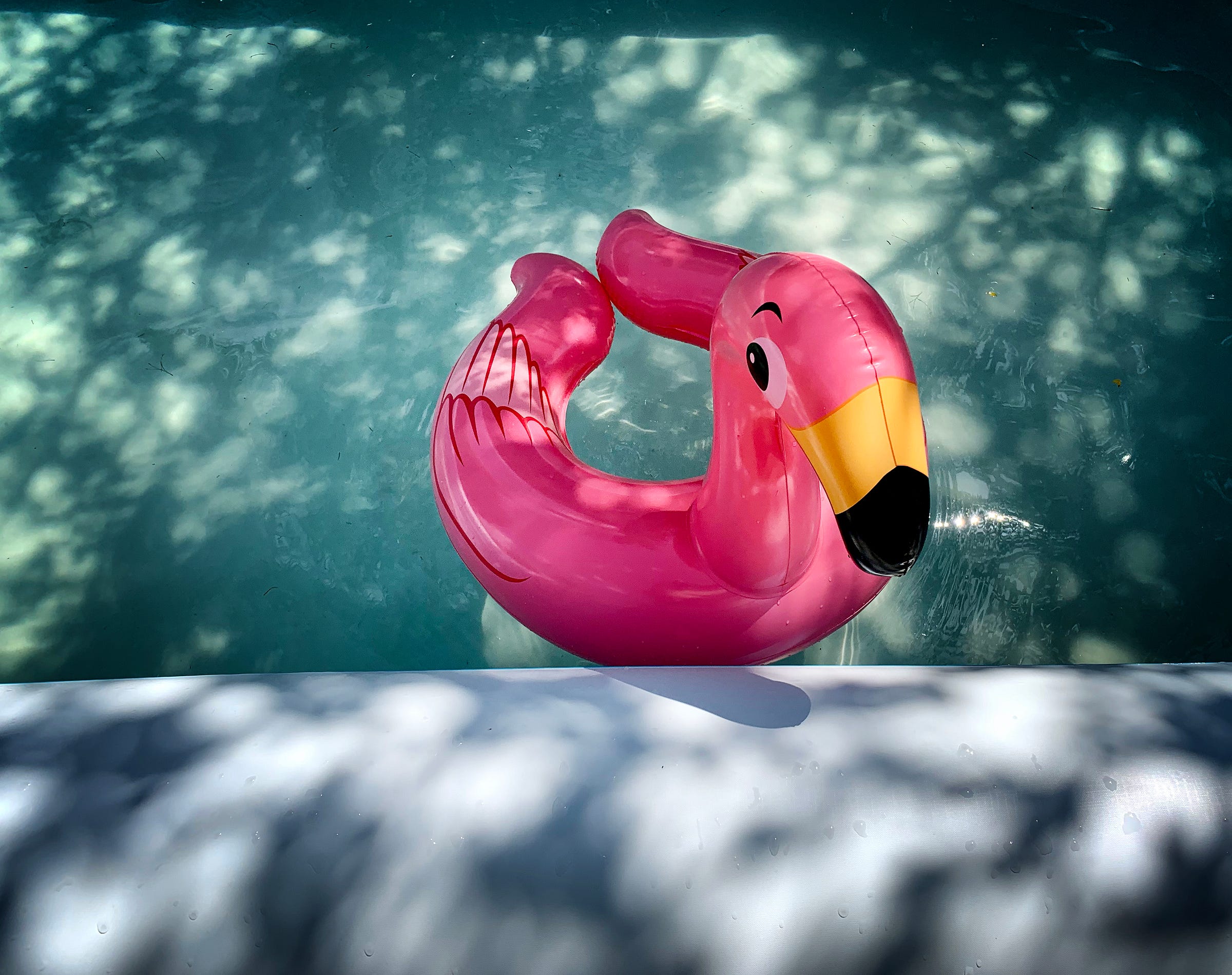Ten Rarely Discussed Creativity Boosters for Photographers
I bet one or two of them will kick your butt toward being more creative and productive.
Hi, and welcome to my little Substack corner. I write about photography, art, design, and the craft of living creatively. I am glad you are here. Consider subscribing to keep up with what I am doing. I promise not to bore you. If you would like to support my efforts, that would be amazing and so appreciated. Either way, I am super happy you are here.
(Audio file added. Let me know if this helps you enjoy “In The Frame”.)
We all get into slumps on occasion.
OK, I don’t know if you do or not, but I sure do. I push and push and push and wake up thinking, “What the heck am I going to do today?“
And I go through my creative exercises, random word associations, lists of ideas, take a road trip… whatever I can do to get the system rebooted, ya know.
I also try to find other ways to make my brain get smarter, out of a slump, and into the game of creative challenges.
Without the challenge of creativity, it wouldn’t be nearly as important to me.
I want to keep this post short, so I’m just gonna jump in here with the ideas.
Try the ones that you think would be the hardest for you if you want to smash your brain, or if you need to start smaller, choose the one that seems the easiest for you.
And those will be different for every reader.
Constraint-based creation:
This method forces creativity by imposing limitations. When we have unlimited options, we can become overwhelmed or fall into familiar patterns. By setting arbitrary constraints, we push ourselves to think differently and find innovative solutions within those boundaries.
Photography assignment: "The Single Square Foot Challenge" Choose a single square foot of space anywhere (indoors or outdoors). For one week, take all your photographs within this limited area. You must find new subjects, angles, and compositions within this tiny space each day. This constraint will force you to look at ordinary things in extraordinary ways and maximize creativity within strict limitations.
Synaesthesia exercises:
Synaesthesia is a neurological condition where stimulation of one sensory or cognitive pathway leads to involuntary experiences in another. By practicing synaesthesia-like exercises, we can create unusual mental connections and spark unique ideas.
Photography assignment: "Capturing the Sound of Color" Choose five distinct colors. For each color, spend time imagining what sound it would make if it could produce noise. Then, go out and photograph scenes or objects that you feel represent those imagined sounds. For example, if you imagine red as a loud, sharp sound, you might photograph a fire truck or a striking red flower against a quiet background. This exercise encourages you to think about color and composition in relation to auditory experiences, potentially leading to unique visual interpretations.
Reverse engineering:
This method involves analyzing a finished product or idea to understand how it was created or developed. By working backward, we can gain insights into the creative process, problem-solving techniques, and decision-making that went into the final result.
Photography assignment: "Deconstructing the Master" Select a famous photograph that you admire. Spend time analyzing every aspect of it: lighting, composition, subject matter, timing, post-processing, etc. Then, try to recreate the photograph as closely as possible. This isn't about copying, but about understanding the photographer's process and decisions. After the recreation attempt, reflect on what you learned and how you might apply these insights to your own unique photographic style.
Use random input generators:
Random input generators introduce unexpected elements into your creative process, forcing your brain to make new connections. This method can break you out of habitual thinking patterns and lead to innovative ideas by combining seemingly unrelated concepts.
Photography assignment: "Random Word Photo Challenge" Use a random word generator to get five unrelated words. Your task is to create a cohesive photo series that incorporates all five words visually. For example, if your words are "umbrella," "cactus," "ribbon," "clock," and "feather," you might create a surreal still life or find ways to incorporate these elements into street photography. This exercise pushes you to think creatively about visual representation and narrative in photography.
Adopt a beginner's mindset in an expert field:
As we become experts, we often develop fixed ways of thinking about our field. By consciously adopting a beginner's mindset, we can challenge our assumptions, ask "naive" questions, and potentially discover new approaches that our expertise might have blinded us to.
Photography assignment: "Rediscovering Your Camera" Pretend you've never used a camera before. Ignore everything you know about "proper" photography techniques. Spend a day exploring your camera as if you're seeing it for the first time. What happens when you press this button? What does this dial do? Take photos without worrying about rules of composition or exposure. The goal is to rediscover the joy of experimentation and potentially stumble upon new techniques or perspectives that your trained photographer's eye might usually overlook.
Engage in physical activities that require focus:
Engaging in activities that require intense focus can induce a state of flow, where you're fully immersed in the present moment. This state can carry over into your creative work, allowing you to focus more deeply and make unexpected connections.
Photography assignment: "Post-Flow Photography" Choose a physical activity that requires your full concentration (e.g., rock climbing, juggling, dancing). Engage in this activity for at least 30 minutes. Immediately afterwards, while still in a flow state, go on a 30-minute photo walk. Don't overthink your shots; let your intuition guide you. The goal is to capture images while your mind is in an altered, highly focused state. Afterwards, review your photos and reflect on how they might differ from your usual work.
Create a "rejection journal":
A rejection journal helps you keep track of ideas you've dismissed, allowing you to revisit them later with fresh eyes. This practice acknowledges that creativity is often about timing and context, and an idea that doesn't work now might be perfect in the future.
Photography assignment: "The Resurrection Project" Start a rejection journal for your photography ideas. For one month, whenever you have an idea for a photo or project that you decide not to pursue, write it down along with your reasons for rejecting it. At the end of the month, review your journal and choose one rejected idea to resurrect. Try to execute it now, considering how you might adapt it to overcome your initial objections. Reflect on how your perspective or circumstances might have changed to make this idea more viable now.
Practice lucid dreaming:
Lucid dreaming occurs when you become aware that you're dreaming and can potentially control the dream's content. This state can be a powerful tool for creativity, allowing you to explore impossible scenarios and make unique connections.
Photography assignment: "Dream Scene Recreation" Begin practicing lucid dreaming techniques (reality checks, dream journaling, etc.). Once you achieve a lucid dream, try to consciously create a vivid visual scene. Upon waking, immediately sketch or write down what you saw. Your task is then to recreate this dream scene as a photograph, using props, locations, and post-processing as needed. This exercise challenges you to translate subconscious imagery into conscious photographic creation.
Use the "worst idea" technique:
By intentionally coming up with bad ideas, you remove the pressure of perfectionism and often end up stumbling upon innovative solutions. This technique can help overcome creative blocks and lead to unexpectedly good results.
Photography assignment: "The Terrible Photo Challenge" Choose a subject or theme and brainstorm the worst possible ways to photograph it. List at least 10 "bad" ideas - the more ridiculous or technically "incorrect," the better. Then, actually try to execute these bad ideas. You might be surprised to find that some of these "worst" photos are actually interesting or evocative in unexpected ways. This exercise helps break conventional thinking patterns and can lead to innovative techniques.
Engage in cross-disciplinary learning:
Studying fields unrelated to your own can provide fresh perspectives and new problem-solving approaches. It can help you draw unexpected parallels and apply principles from one discipline to another in innovative, and surprising ways.
Photography assignment: "The Interdisciplinary Inspiration" Choose a field completely unrelated to photography (e.g., botany, architecture, culinary arts, or quantum physics). Spend a week studying the basic principles of this field. Then, create a photo series that applies a key concept from your chosen field to photography. For example, if you studied architecture, you might apply principles of load-bearing structures to compose your images. If you studied botany, you might use plant growth patterns to inform your composition. This exercise encourages you to view your art through an entirely new lens, potentially leading to innovative techniques or perspectives.
These assignments challenge you to tap into different aspects of creativity: from disassembling a favorite photograph to trying your best to take the worst photo in the world. (Try it… it is damn hard to do, BTW.)
What little-known creativity exercises do you employ when the brain fog rolls in thicker than a Stephen King beach scene?
When you are ready, here is how I can help you succeed.
Group Mentorship: a small group of photographers who meet to show images, work on their portfolio, and build their businesses with help from a wonderful group. Lifetime membership for one fee.
One-on-one Mentorship: You and me - working together in an intense 6-month push to get you on the way to over $30K in additional revenue. The work we lay down will help you increase and scale your business for years ahead.
And the brand new P52 one-year masterclass.
This is a very unique course. We will explore composition, color, lighting, preparing for a professional shoot, business best practices, and ancillary skills sure to make your business offering stronger. By focusing on real-world assignments and tying them into real-world clients, you build your portfolio, your business, and your future while taking the time you need for the transition with a gradual approach.
The entire year is less money than a two-hour consultation with a business coach, but it will take you farther than 4 years of schooling and apprenticing. The plan is for you to make all of the enrollment fee back in the first three months, then gradually build until you have the momentum to keep on working.
We do it with one assignment per week which is then reviewed in a live meeting via Zoom. These meetings are recorded, so you can come back again and again to review your critique and to get the answers you need.
This will be a small class of about 10 students.
If you need to break the payments out into three installments, just let me know.
Find out more here: Project 52 Pro System.







Some creative suggestions Don! I love that you went down the dreaming angle, though perhaps even simpler is starting to observe, journal, and make photos from regular dream imagery before going down the lucid path. This Substack and the photography community of the same name (Aminus3.com) was divined by dreams, and 20 years later still going strong!